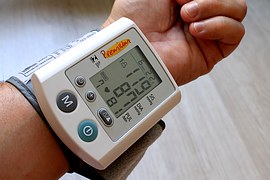Due to policy adjustments, cultural shifts, technological advancements, and health care costs over the last few decades, the health care systems have shifted towards a model that prioritizes prevention rather than cure – a more patient-empowered model
The hospital industry has constantly continued to evolve, streamline and improve patient care by integrating large data and shifting from the traditional ‘fee-for-service’ payment model towards the modern ‘fee-for-outcome’ payment model. In simple terms, the hospitals of yester-century are quite different from today’s health care centers that are sprawling across the world.
Changes in the health care industry
Changes in health care sector over a few decades ago
 The past few decades have been characterized by diversity, rapidity, and unpredictability of numerous changes within the area of health, particularly the acute care. Across the world, there have been significant changes which seem promising and strongly convergent despite the differences in health systems and structures. In the capital planning context, two very distinct trends have emerged namely:
The past few decades have been characterized by diversity, rapidity, and unpredictability of numerous changes within the area of health, particularly the acute care. Across the world, there have been significant changes which seem promising and strongly convergent despite the differences in health systems and structures. In the capital planning context, two very distinct trends have emerged namely:
- The shift from centralization to greater locally controlled and flexible systems, and
- The move from the traditional bed-based normative planning to a highly integrated and responsive system which focuses on disease pathways as the primary influence for planning.
This comparatively immediate and rapid change has exposed the tendency for capital investment over the years to have become the center of concentration on the short-term tactical positioning of capital assets. Almost all health care systems have been caught unaware by these sudden shifts and are forced to realize that the capital asset models being applied look increasingly misplaced within the steps with the future long-term requirements of the workforce they accommodate and the services they house.
In general, some trends have been universally agreed upon as the mega trends in the health sector. These trends are also thought to dominate the policies and priorities of the health sector in the coming years. They include:
Epidemiological and demographic trends
Demographic trends such as elderly needs have been accommodated in today’s health care programs. However, more still needs to be done to provide new integrated and social health care models to address the potential issues of costly inequality in service delivery.
The exploration into ICT and new clinical technologies
ICT is important in helping to determine spending priorities in the health sector. Investing in modern technology does not only improve service delivery. It also improves the quality of services and goods offered to patients. For instance, cancer survival rates have significantly improved as a result of technological investment in the health sector.
Patient quality and safety such as clinical outcomes and transparency
Poor data and assessment have been among the major causes of low or weakened investments in the health sector in the past. But with the modern technology, such issues have been addressed to a great percentage thereby improving the quality of services offered in health care sector. The desire for economic sustainability within the health care sector: hospitals should spend at least 10% to 15% of their economic budget on upgrading to modern systems so as to be in pace with at sectors.
According to the WHO (2008b) report, there are four criteria by which an individual’s right to health can be evaluated. The report further states that, by investing in the right type of capital and balancing between other investment opportunities and capital, four dimensions are implicitly supported. These are:
Availability: high quality, properly functioning public health facilities, goods. Services and programs should be readily and sufficiently available
Accessibility
Everyone should have access to better health facilities, equipment, goods and services without discrimination based on gender, race, age, disability, and education.
Acceptability
 All the health care facilities, goods, and services must respect the medical code of conduct and ethics. They should be sensitive to gender, culturally appropriate and should be sensitive to life-cycle requirements. Also, they should be designed to respect privacy rights as well as improve the health status of all the persons concerned.
All the health care facilities, goods, and services must respect the medical code of conduct and ethics. They should be sensitive to gender, culturally appropriate and should be sensitive to life-cycle requirements. Also, they should be designed to respect privacy rights as well as improve the health status of all the persons concerned.
Quality
All health facilities and equipment, goods and services must be not only scientifically appropriate but also medically qualified for use.

